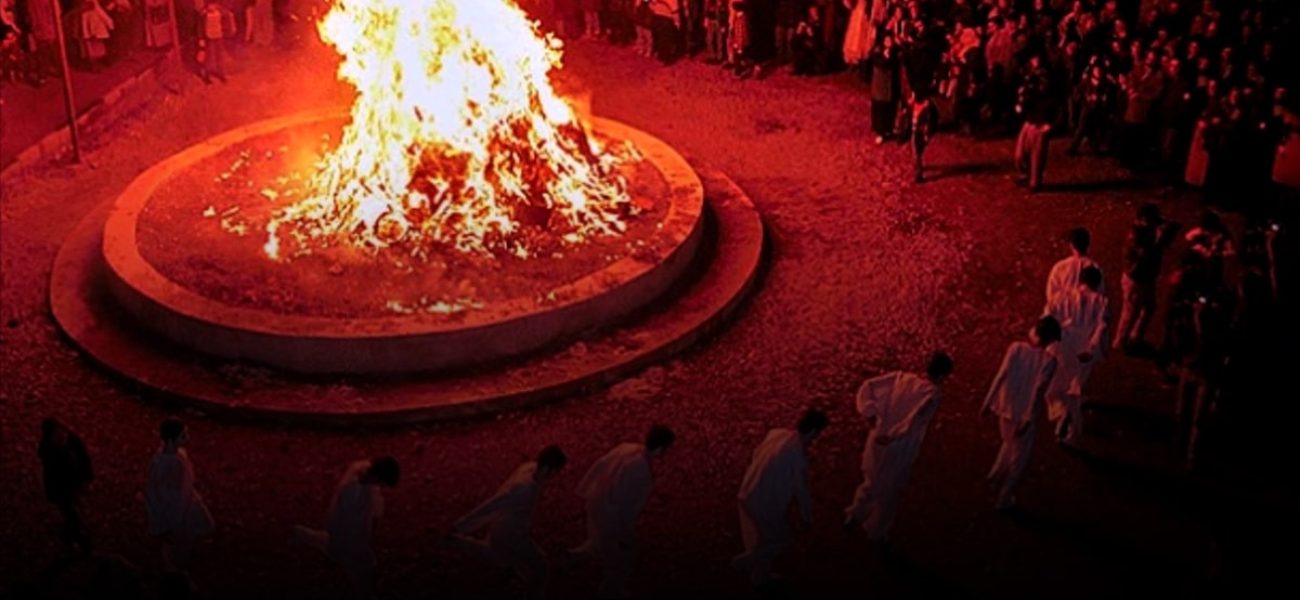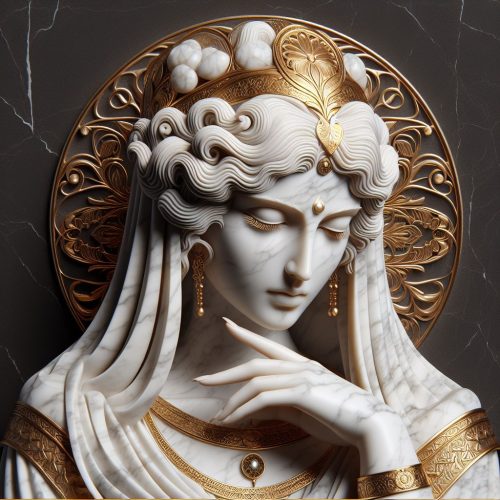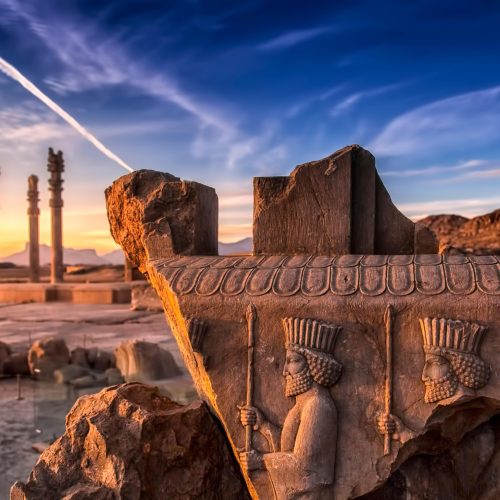Chaharshanbe Suri, a vibrant and ancient Iranian festival, holds a special place in the hearts of the Iranian people. Celebrated on the eve of the last Wednesday of the year, Chaharshanbe Suri marks the prelude to the grand festivities of Nowruz, the Persian New Year. Rooted in the rich tapestry of Zoroastrian traditions, this festival is a testament to the enduring cultural heritage of Iran, blending ancient rituals with the dynamism of contemporary celebrations.
Historical Roots in Zoroastrianism
Chaharshanbe Suri’s historical roots delve deep into the rich tapestry of Zoroastrianism, the ancient religion that flourished in Persia before the advent of Islam. Zoroastrianism, founded by the prophet Zoroaster (Zarathustra) in the 6th or 7th century BCE, left an indelible mark on the spiritual, cultural, and social fabric of ancient Iran.
Zoroastrian Influence on Chaharshanbe Suri
The festival’s inception can be traced to Zoroastrian cosmology, where the eternal struggle between Ahura Mazda, the god of light, and Angra Mainyu, the destructive force of darkness, played a pivotal role. Fire, a sacred element in Zoroastrianism, was revered as a symbol of purity and divine wisdom. This reverence for fire laid the foundation for the incorporation of fire-centric rituals in Chaharshanbe Suri.
Significance of Fire in Zoroastrianism
In Zoroastrian theology, fire represented the embodiment of Ahura Mazda’s divine presence on Earth. Temples, known as fire temples, were dedicated to the perpetual burning of sacred fires. The respect for fire as a medium of purity, enlightenment, and protection against malevolent forces seamlessly integrated into the cultural practices of the festival.
Zoroastrian Festivals and Seasons
Zoroastrianism, with its emphasis on the cosmic struggle between good and evil, celebrated various festivals marking seasonal transitions. These festivals were deeply rooted in agrarian cycles and spiritual symbolism. Chaharshanbe Suri, occurring on the cusp of spring, aligns with the Zoroastrian tradition of celebrating the renewal of life and the triumph of light as winter gives way to the blossoms of spring.
Fire Temples and Ceremonial Fires
Zoroastrian fire temples, where sacred fires were kept alight, served as centers for worship and community gatherings. The practice of lighting ceremonial fires during festivals was an integral part of Zoroastrian rituals. Chaharshanbe Suri, with its focus on communal bonfires, echoes this ancient tradition, symbolizing the communal bond and shared spiritual aspirations.
Rituals and Traditions

Chaharshanbe Suri’s rituals and traditions form a captivating tapestry, weaving together ancient Zoroastrian practices with the vibrant expressions of contemporary celebration. These rites, deeply rooted in spiritual symbolism and communal engagement, create an atmosphere of shared joy and collective renewal.
Jumping Over Bonfires
The central and most exhilarating tradition of Chaharshanbe Suri involves the age-old practice of leaping over bonfires. As the flames dance and crackle, participants, young and old alike, take turns jumping over the fire, an act believed to cleanse them of illnesses and misfortunes. This ritual echoes the Zoroastrian reverence for fire as a purifying element, symbolizing the triumph of light over darkness and the renewal of the spirit.
Chanting Rituals
While engaging in the fiery leaps, participants recite traditional chants, infusing the celebration with spiritual energy. These chants, often passed down through generations, carry echoes of Zoroastrian invocations, expressing hopes, aspirations, and gratitude. The rhythmic recitation adds a sacred resonance to the festivities, creating a harmonious blend of ancient prayers and contemporary expressions.
Illuminating Candles
In addition to the bonfires, candles play a significant role in Chaharshanbe Suri. Individuals carry lit candles, symbolizing enlightenment and the triumph of goodness. The act of illuminating candles represents a collective effort to dispel darkness, both metaphorically and literally, as the soft glow of candlelight mingles with the bonfire’s radiant flames, creating a mesmerizing visual spectacle.
Symbolic Items in Bonfires
Across different regions, there are variations in the items placed into the bonfires during Chaharshanbe Suri. Some may write down their wishes, prayers, or even symbolic representations of their troubles, offering them to the flames as a form of catharsis. This act, rooted in spiritual symbolism, signifies a symbolic letting go of the past and a hopeful embrace of a brighter future.
Symbolism and Significance
Chaharshanbe Suri’s symbolism and significance encompass a profound tapestry of cultural, spiritual, and communal meanings that resonate across generations. The expanded exploration delves deeper into the nuanced layers of the festival, shedding light on its multifaceted importance.
Cleansing Rituals
The cleansing rituals embedded in Chaharshanbe Suri hold a symbolic resonance that extends beyond the physical act of leaping over bonfires. This ancient tradition represents a collective purification, where individuals not only rid themselves of physical impurities but also metaphorically cleanse their souls of accumulated burdens, regrets, and misfortunes from the past year. The flames, reaching upward, are believed to consume negative energies, paving the way for spiritual renewal and a fresh start as the new year approaches.
Welcoming Spring
Chaharshanbe Suri, celebrated on the eve of the last Wednesday before Nowruz, serves as a spirited herald to the arrival of spring. The festival marks the transition from the dormant winter season to the vibrant rebirth of nature. The symbolic act of jumping over bonfires becomes a metaphorical leap into the warmth and blossoming vitality of spring, mirroring the renewal of life that characterizes this season. It is a joyous affirmation of the cyclical nature of existence and the perpetual renewal embedded in the fabric of the universe.
Community Bonding
At its core, Chaharshanbe Suri is a celebration of community and shared identity. The gathering of people from diverse backgrounds, ages, and walks of life in open spaces and streets underscores the festival’s ability to foster a strong sense of unity. Through the collective act of jumping over bonfires, individuals partake in a shared experience that transcends individual differences, reinforcing the interconnectedness of the community. This communal bonding not only contributes to the festive atmosphere but also nurtures a sense of belonging and mutual support.
Anticipation for Nowruz
Chaharshanbe Suri acts as a lively prelude to the grandeur of Nowruz, the Persian New Year. The rituals performed during Chaharshanbe Suri symbolize a symbolic cleansing and preparation for the new beginning that Nowruz represents. The festival creates an atmosphere of anticipation, building excitement and momentum as Iranians collectively prepare to welcome the dawn of the New Year with open hearts and renewed spirits.
Regional Variations
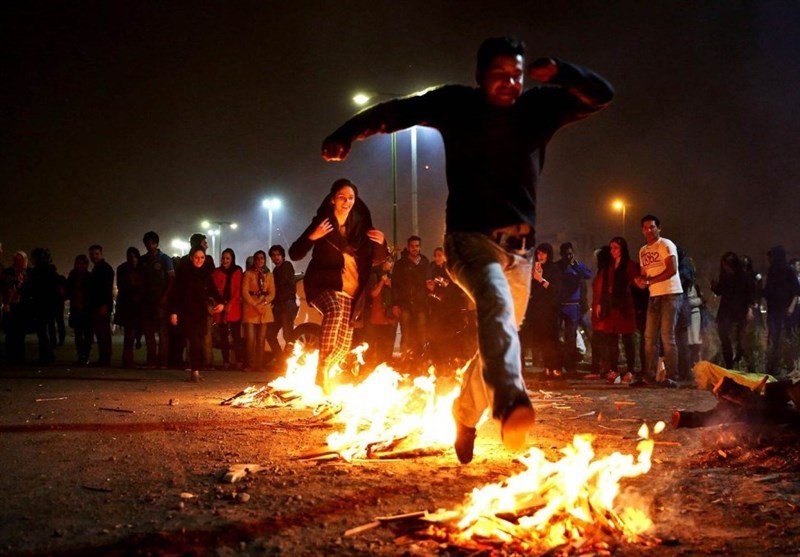
Chaharshanbe Suri’s vibrant celebration extends across the diverse regions of Iran, each locale adding its unique cultural nuances to the festivities. The expanded exploration of regional variations illuminates the tapestry of diversity within the celebration, showcasing the distinct flavors that different communities bring to this ancient festival.
Cultural Diversity
The cultural diversity witnessed in Chaharshanbe Suri celebrations is a testament to Iran’s rich and varied heritage. From the bustling streets of Tehran to the serene landscapes of Isfahan, the festival takes on different hues, reflecting the unique cultural identities of each region. Local customs, dialects, and historical influences contribute to a kaleidoscope of traditions that weave seamlessly into the overarching celebration.
Specific Rituals and Practices
Within this tapestry of diversity, specific regional rituals and practices during Chaharshanbe Suri stand out. For instance, in the northern regions, communities might have distinct ways of constructing bonfires, incorporating specific materials or symbols into the fires. In the southern provinces, the rhythmic beats of traditional music might accompany the jumping over flames, infusing a regional musicality into the festivities.
Culinary Traditions
The regional variations in Chaharshanbe Suri are not limited to rituals alone; they extend to culinary traditions. Different provinces showcase their unique gastronomic delights during the celebration. From special sweets and pastries to regional dishes prepared for the occasion, Chaharshanbe Suri becomes a feast not only for the spirit but also for the palate, with each region contributing its culinary specialties.
Costume and Attire
The attire worn during Chaharshanbe Suri can also exhibit regional distinctions. Traditional garments, accessories, and even colors may vary, adding a visual richness to the celebrations. The kaleidoscopic array of costumes reflects the fusion of ancient customs with the evolving fashion preferences unique to each region.
Folklore and Mythology
Regional folklore and mythology often find expression during Chaharshanbe Suri, enriching the celebration with local narratives. These stories, passed down through generations, might vary from one region to another, offering diverse perspectives on the festival’s origins and significance. This storytelling tradition adds an additional layer of cultural depth to the festivities.
Challenges and Adaptations
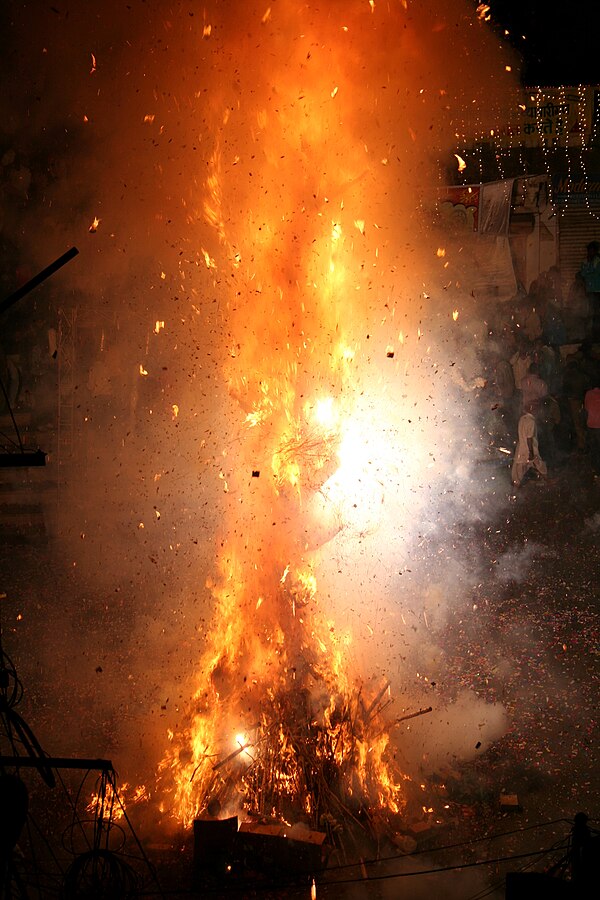
Urbanization
The process of urbanization poses a set of challenges and opportunities for Chaharshanbe Suri, and understanding its implications on the festival allows for a nuanced exploration.
Urban spaces, often limited and regulated, necessitate creative adaptations to retain the essence of Chaharshanbe Suri. Organizers and communities are faced with the challenge of finding suitable locations for bonfires while complying with safety regulations and environmental considerations. Designated areas, public parks, or even closed-off streets may serve as alternatives, requiring thoughtful planning to ensure a safe yet authentic celebration.
Moreover, the urban context introduces considerations of inclusivity and accessibility. As Chaharshanbe Suri attracts a diverse urban population, efforts are made to make the festival accessible to everyone, regardless of age or physical ability. Organizers may implement measures to accommodate individuals with disabilities and ensure that the celebration remains a communal experience for all.
The challenge of striking a balance between tradition and urban development prompts ongoing discussions within communities. Urbanization necessitates a reimagining of Chaharshanbe Suri, prompting questions about how to preserve cultural authenticity while adapting to the changing landscape of cities. Initiatives like public awareness campaigns, involving local authorities, and collaborating with urban planners contribute to the evolution of Chaharshanbe Suri within urban environments.
Preservation of Local Heritage
Preserving local heritage within the context of Chaharshanbe Suri becomes imperative as urbanization progresses. Each region in Iran boasts unique customs, rituals, and stories associated with the festival, and ensuring their continuity requires deliberate efforts.
Collaborations with local artisans, historians, and cultural experts play a crucial role in preserving and promoting regional heritage. This might involve integrating traditional crafts, storytelling sessions, and exhibitions into Chaharshanbe Suri celebrations, creating an immersive experience that resonates with the cultural identity of each locale.
Local businesses, too, can contribute to the preservation of heritage by incorporating traditional elements into their offerings. From local cuisines to crafts, these enterprises become integral to maintaining a connection between Chaharshanbe Suri and the unique heritage of each region.
Community engagement becomes a key strategy in the preservation of local heritage. By involving residents in decision-making processes and encouraging active participation, Chaharshanbe Suri transforms into a collaborative effort to safeguard and celebrate the distinctive cultural fabric of different regions.
Contemporary Celebrations
Social Media and Technology
The role of social media and technology in shaping contemporary Chaharshanbe Suri celebrations extends beyond the immediate sharing of experiences. A more in-depth exploration reveals the multifaceted ways in which digital platforms contribute to the evolution of the festival.
In urban settings, where digital connectivity is ingrained in daily life, social media becomes a dynamic tool for organizing and promoting Chaharshanbe Suri events. Local communities leverage platforms such as Instagram, Twitter, and Facebook to create dedicated pages or events, disseminating information about bonfire locations, safety guidelines, and the schedule of festivities. The real-time sharing of photos, videos, and live updates not only connects participants within a city but also fosters a sense of unity across different urban centers.
Beyond the immediate celebration, social media provides a virtual space for discussions on the cultural significance of Chaharshanbe Suri. Online forums and groups become platforms for individuals to share historical insights, personal stories, and reflections on the evolving nature of the festival. This digital dialogue enhances cultural awareness and deepens the collective understanding of Chaharshanbe Suri’s place in contemporary Iranian society.
In rural and remote regions, while social media may not be as prevalent, technology still plays a role in preserving the festival’s essence. Local radio stations, community websites, and even text messaging contribute to the dissemination of information about Chaharshanbe Suri events. These mediums ensure that even in areas with limited digital access, the festival remains a communal affair, with technology serving as a bridge between generations and geographies.
Public Events and Festivals
The organization of public events and festivals during Chaharshanbe Suri is a dynamic aspect that intertwines tradition with modernity. An in-depth exploration uncovers the various dimensions of these gatherings and their impact on the overall celebration.
In urban settings, public events are often organized in collaboration with local authorities and cultural institutions. City squares, parks, or designated areas transform into vibrant spaces where communities converge to celebrate. These organized gatherings feature not only the traditional bonfires but also a diverse array of cultural performances, music, and dance. The infusion of contemporary elements adds a modern flair to the festivities, making them more accessible and appealing to diverse age groups.
In contrast, rural areas maintain a more grassroots approach to public celebrations. Local communities may organize smaller-scale events in communal spaces, often with a stronger emphasis on traditional rituals and cultural expressions. These events serve as a focal point for preserving regional heritage, fostering a sense of community pride, and passing down Chaharshanbe Suri traditions to younger generations.
Public events, whether in urban or rural settings, contribute to a sense of collective identity and shared experience. They offer a platform for community engagement, enabling participants to connect with their cultural roots while embracing the evolving dynamics of contemporary celebrations.
Chaharshanbe Suri and Nowruz
Symbolic Transition
The symbolic transition from Chaharshanbe Suri to Nowruz unfolds with intricate layers of cultural significance and ritualistic continuity, each contributing to the rich tapestry of Iranian traditions.
In urban contexts, where the pace of life is often accelerated, the symbolic transition gains momentum as Chaharshanbe Suri sets the stage for the grandeur of Nowruz. Organized events and public celebrations become key conduits in weaving the narrative that bridges the two festivities. For instance, themes of cleansing and renewal observed during Chaharshanbe Suri find resonance in the meticulous cleaning of homes and the preparation of the Haft-Seen table, a central feature of Nowruz. The fires lit during Chaharshanbe Suri, symbolizing the triumph of light over darkness, seamlessly dovetail into the vibrant illuminations that characterize Nowruz.
In rural areas, the transition is often more organic and deeply rooted in agricultural practices. The act of planting symbolic seeds during Chaharshanbe Suri, a tradition in some regions, becomes a poignant precursor to the agricultural themes that define Nowruz. The anticipation of growth and abundance, embedded in both celebrations, creates a seamless continuum, where the rituals of Chaharshanbe Suri lead harmoniously into the agricultural preparations for Nowruz.
Cultural Continuity
The cultural continuity between Chaharshanbe Suri and Nowruz transcends the temporal boundaries of each celebration, manifesting in shared symbols, narratives, and communal activities. This continuity is particularly evident in the ways certain elements seamlessly transition from one festivity to the other.
The bonfires of Chaharshanbe Suri, which illuminate the last Wednesday of the year with their cleansing flames, become emblematic of the fervor and optimism that accompany the arrival of Nowruz. The fires symbolize not only the burning away of the old but also the illumination of the path toward a new beginning. As communities gather around these fires during Chaharshanbe Suri, the sense of unity and shared purpose spills over into the preparations for Nowruz, fostering a collective anticipation for the renewal that the New Year promises.
In urban and rural settings alike, the cultural continuity is reinforced by the shared traditions of storytelling and oral history. Elders pass down tales of Chaharshanbe Suri celebrations from bygone eras, intertwining them with the stories of Nowruz. This intergenerational transmission of cultural narratives contributes to a sense of belonging and cultural identity, fostering a deep connection between past, present, and future.
Shared Symbolism
The shared symbolism between Chaharshanbe Suri and Nowruz is a testament to the profound interconnection of these celebrations. The elements that define Chaharshanbe Suri—fire, cleansing rituals, and communal gatherings—find echoes in the preparations and festivities surrounding Nowruz.
The Haft-Seen table, adorned with seven symbolic items during Nowruz, encapsulates shared symbolism with Chaharshanbe Suri. The candles on the Haft-Seen table not only represent the light of life but also resonate with the flames of Chaharshanbe Suri. The mirror, a prominent feature on the Haft-Seen table, reflects not only the physical appearance but also the introspective cleansing experienced during Chaharshanbe Suri.
The act of jumping over bonfires during Chaharshanbe Suri, symbolizing the leap from darkness to light, finds a parallel in the collective hope and optimism that define Nowruz. The fires of Chaharshanbe Suri, where individuals cast away their worries and misfortunes, serve as a metaphor for the collective aspiration toward a brighter, more prosperous future during Nowruz.
As the intertwined narratives of Chaharshanbe Suri and Nowruz continue to unfold, the exploration of their symbolic transition and cultural continuity reveals a profound story of resilience, renewal, and shared identity. These celebrations, while distinct in their expressions, form an inseparable tapestry in the rich cultural heritage of Iran. As Iranians embark on the journey from the cleansing fires of Chaharshanbe Suri to the jubilant festivities of Nowruz, the unbroken thread of tradition weaves a narrative that transcends time, connecting generations in a celebration of life’s eternal cyclical journey.
Chaharshanbe Suri, with its roots deeply embedded in Zoroastrian traditions, stands as a vibrant testament to the enduring cultural heritage of Iran. Beyond the leaping flames and rhythmic chants, the festival embodies the collective spirit of purification, renewal, and community bonding. As Iranians around the world gather to celebrate this ancient festival, Chaharshanbe Suri continues to illuminate the path towards a new year, fostering connections between the past and the ever-evolving present.

